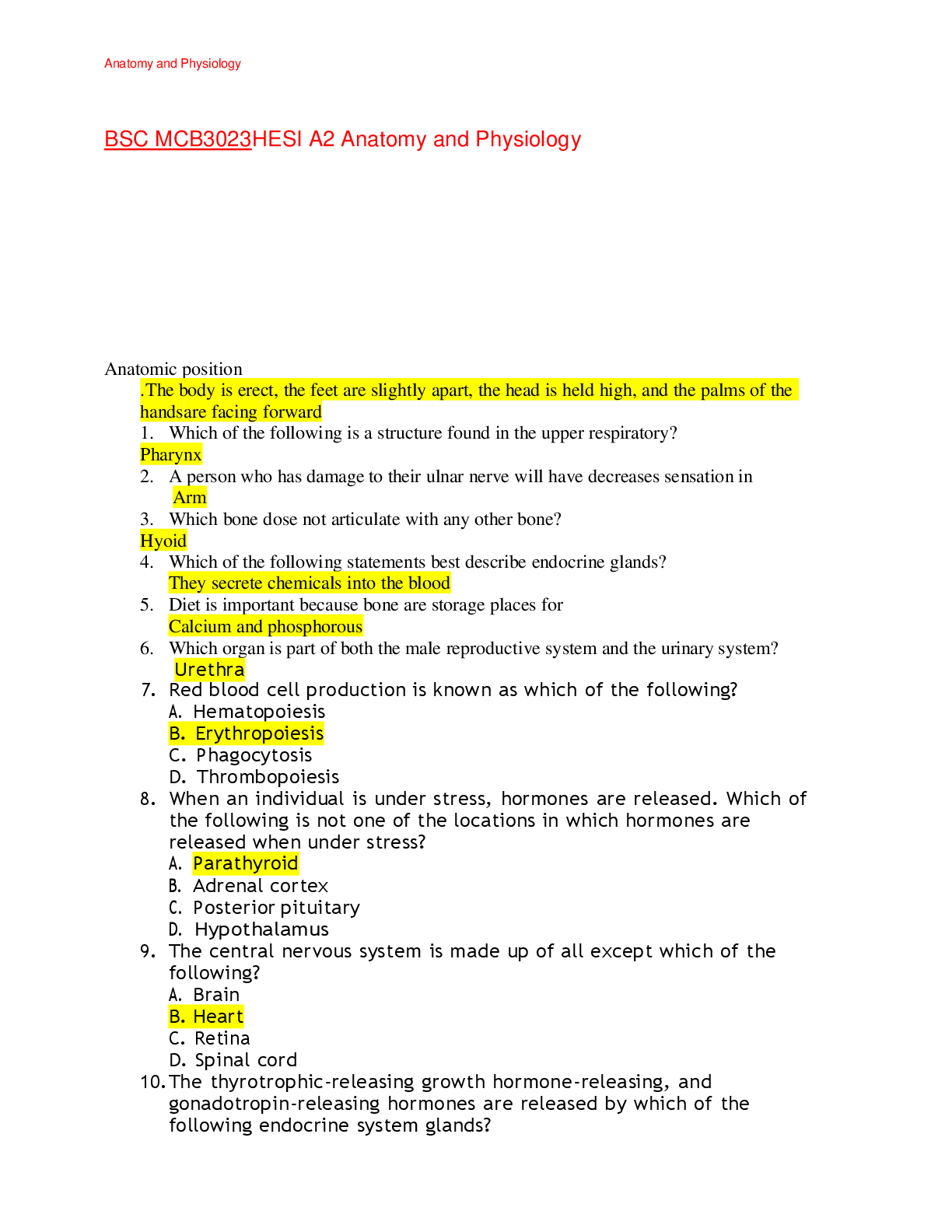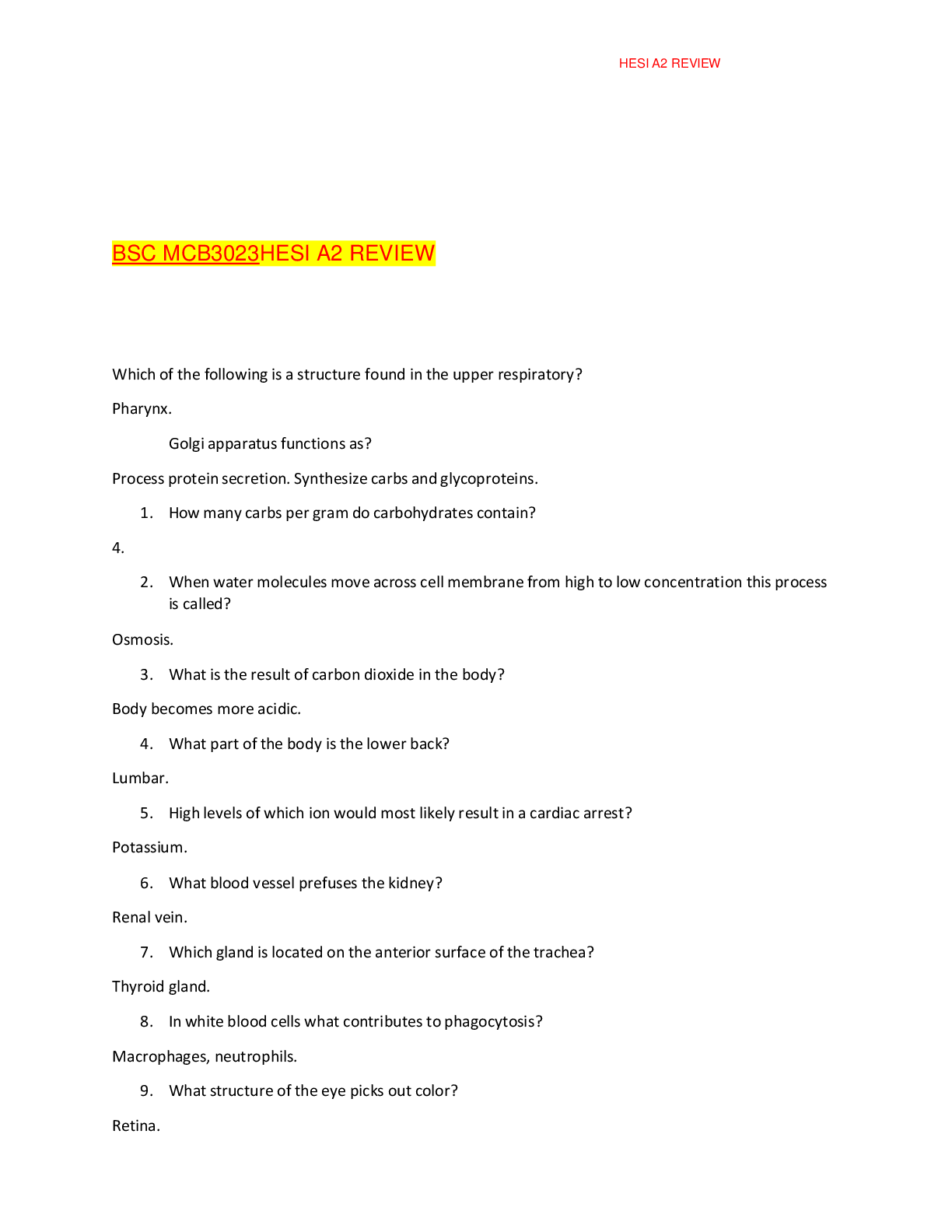159 HESI OB/MATERNITY Practice Quiz Questions with Correct Answers
Document Content and Description Below
159 HESI OB/MATERNITY Practice Quiz Questions with Correct Answers At 14-weeks gestation, a client arrives at the Emergency Center complaining of a dull pain in the right lower quadrant of her abd ... omen. The nurse obtains a blood sample and initiates an IV. Thirty minutes after admission, the client reports feeling a sharp abdominal pain and a shoulder pain. Assessment findings include diaphoresis, a heart rate of 120 beats/minute, and a blood pressure of 86/48. Which action should the nurse implement next? a. Check the hematocrit results. b. Administer pain medication. c. Increase the rate of IV fluids. d. Monitor client for contractions. >>> c. increase the rate of IV fluids A woman who thinks she could be pregnant calls her neighbor, a nurse, to ask wen she could use a home pregnancy test to diagnose pregnancy. Which response is best? a. a home pregnancy test can be used right after your first missed period b. these tests are most accurate after you have missed your second period c. home pregnancy tests often give false positives and should not be trusted d. the test can provide accurate information when used right after ovulation >>> a. a home pregnancy test can be used right after your first missed period A newborn, whose mother is HIV positive, is scheduled for follow-up assessments. The nurse knows that the most likely presenting symptom for a pediatric client with AIDS is: a. shortness of breath b. joint pain c. a persistent cold d. organmegaly >>> c. a persistent cold Twenty minutes after a continuous epidural anesthetic is administered, a laboring client's blood pressure drops from 120/80 to 90/60. What action should the nurse take? a. notify the healthcare provider or anesthesiologist b. continue to assess the blood pressure q5min c. place the woman in a lateral position d. turn off continuous epidural >>> c. place the woman in a lateral position In developing a teaching plan for expectant parents, the nurse plans to include information about when the parents can expect the infant's fontanels to close. The nurse bases the explanation on knowledge that for the normal newborn, the a. anterior fontanel closes at 2 to 4 months and the posterior by the end of the first week b. anterior fontanel closes at 5 to 7 months and the posterior by the end of the week c. anterior fontanel closes at 8 to 11 months and the posterior by the end of the second week d. anterior fontanel closes at 12 to 18 months and the posterior by the end of the second month >>> d. anterior fontanel closes at 12 to 18 months and the posterior by the end of the second month A client in active labor is admitted with preeclampsia. Which assessment finding is most significant in planning this client's care? a. patellar reflex 4+ b. blood pressure 158/80 c. four hour urine output 240 ml d. respiration 12/minute >>> a. patellar reflex 4+ A 4 week old premature infant has been receiving epoetin alfa for the last three weeks. Which assessment finding indicates to the nurse that the drug is effective? a. slowly increasing urine output over the last week b. respiratory rate changes from the 40s to the 60s c. changes in apical heart rate from the 180 to the 140s d. change in indirect bilirubin from 12 mg/dl to 8 mg/dl >>> c. changes in apical rate from the 180s to the 140s A pregnant client tells the nurse that the first day of her last menstrual period was August 2, 2006. Based on Nagele's rule, what is the estimated date of delivery? a. April 25, 2007 b. May 9, 2007 c. May 29, 2007 d. June 2, 2007 >>> b. May 9, 2007 The nurse is performing a AGA on a full-term newborn during the first hour of transition using the Dubowitz scale. Based on this assessment, the nurse determines that the neonate has a maturity rating of 40 weeks. Which findings should the nurse identify to determine if the neonate is SGA? (Select all that apply.) a. admission weight of 4 lbs 15 oz b. head to heel length of 17 in c. frontal occipital circumference of 12.5 in d. skin smooth with visible veins and abundant vernix e. anterior plantar crease and smooth heel surfaces f. full flexion of all extremities in resting supine position >>> a, b, c The nurse assess a client admitted to the labor and delivery unit and obtains the following data: BP 110/68, FHR 110 bpm, cervix 1 cm dilated and uneffaced. Based on these assessment findings, what intervention should the nurse implement? a. insert a fetal monitor b. assess for cervical changes q1H c. monitor bleeding from IV sites d. perform Leopold's maneuvers >>> c. monitor for bleeding from IV sites [Show More]
Last updated: 3 years ago
Preview 1 out of 33 pages
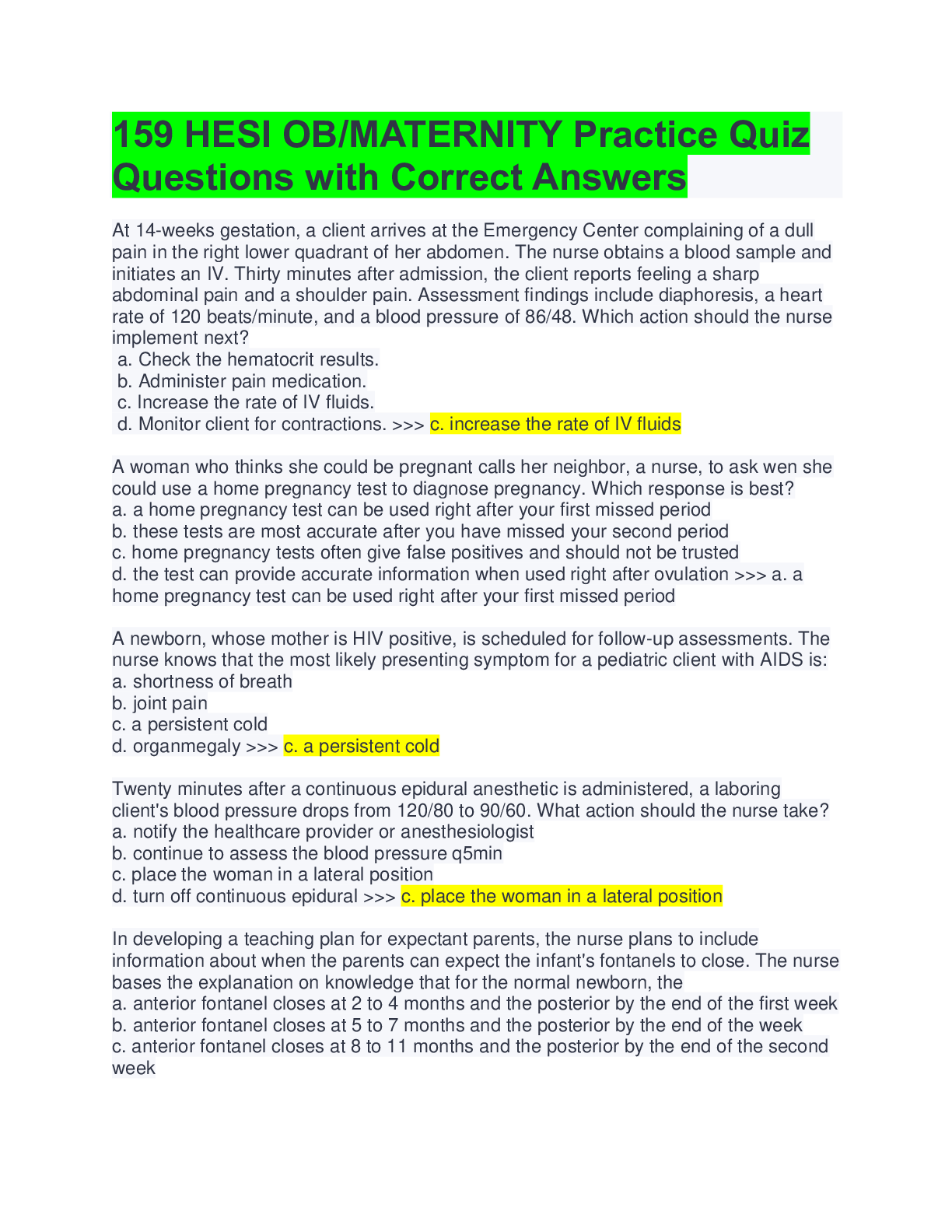
Buy this document to get the full access instantly
Instant Download Access after purchase
Buy NowInstant download
We Accept:

Reviews( 0 )
$9.00
Can't find what you want? Try our AI powered Search
Document information
Connected school, study & course
About the document
Uploaded On
Sep 21, 2022
Number of pages
33
Written in
All
Additional information
This document has been written for:
Uploaded
Sep 21, 2022
Downloads
0
Views
153

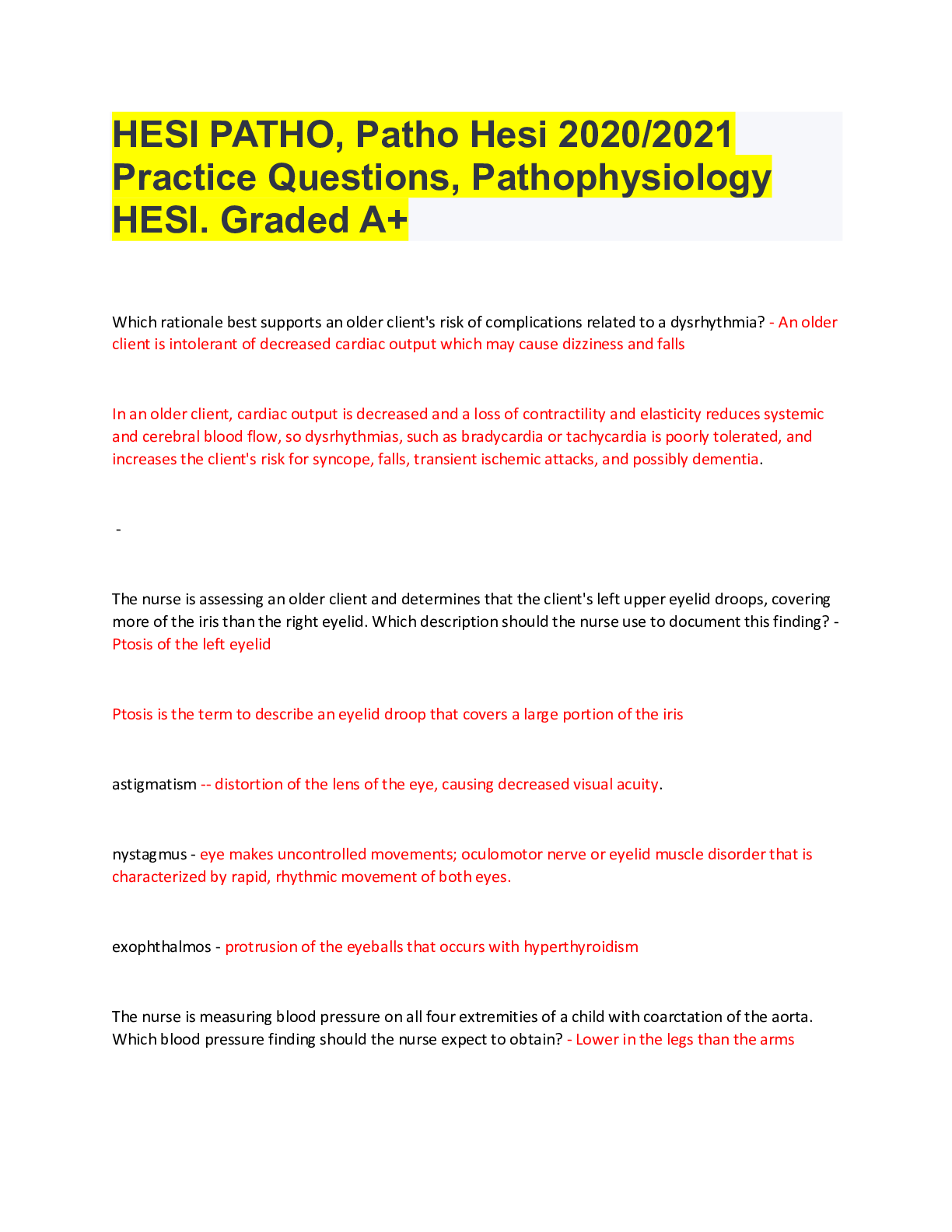



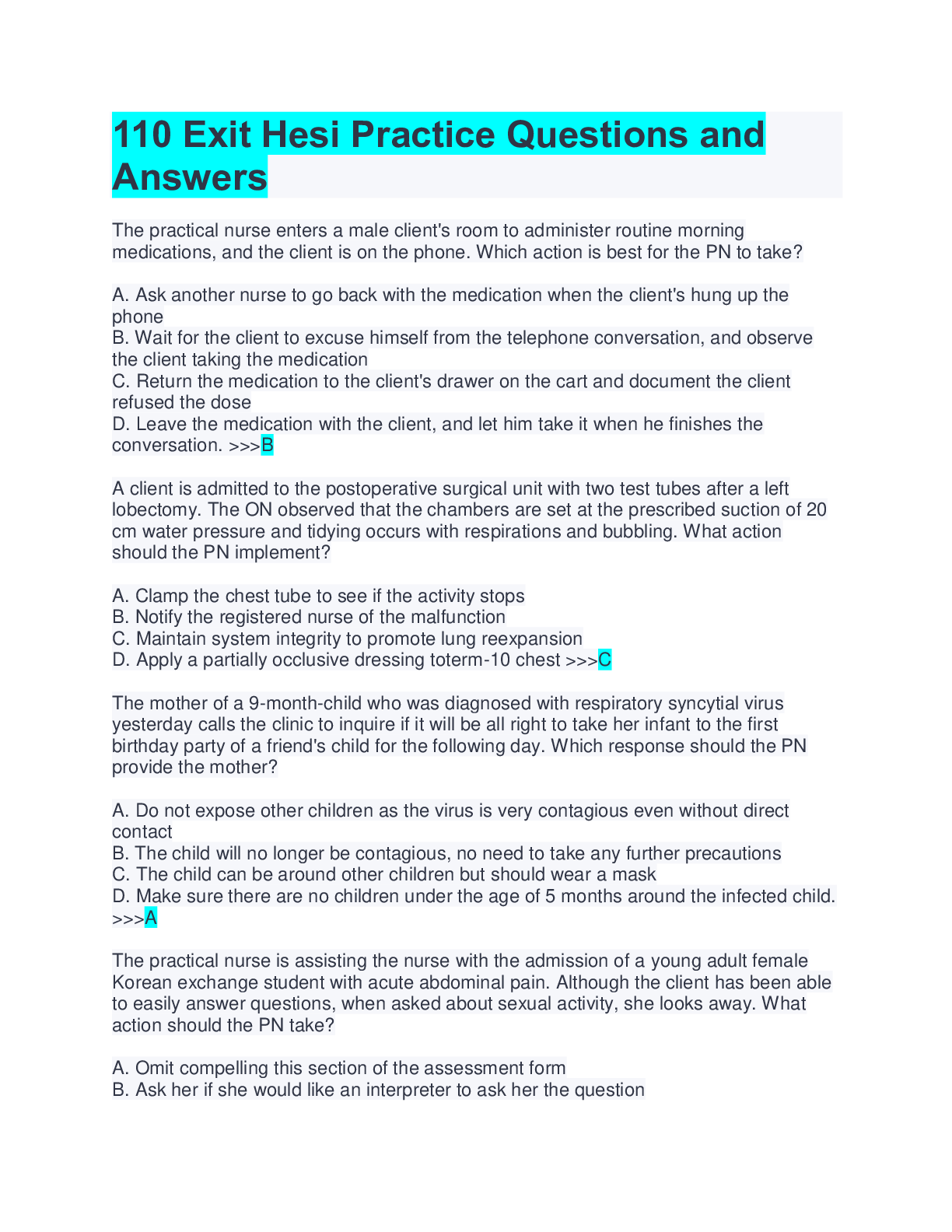

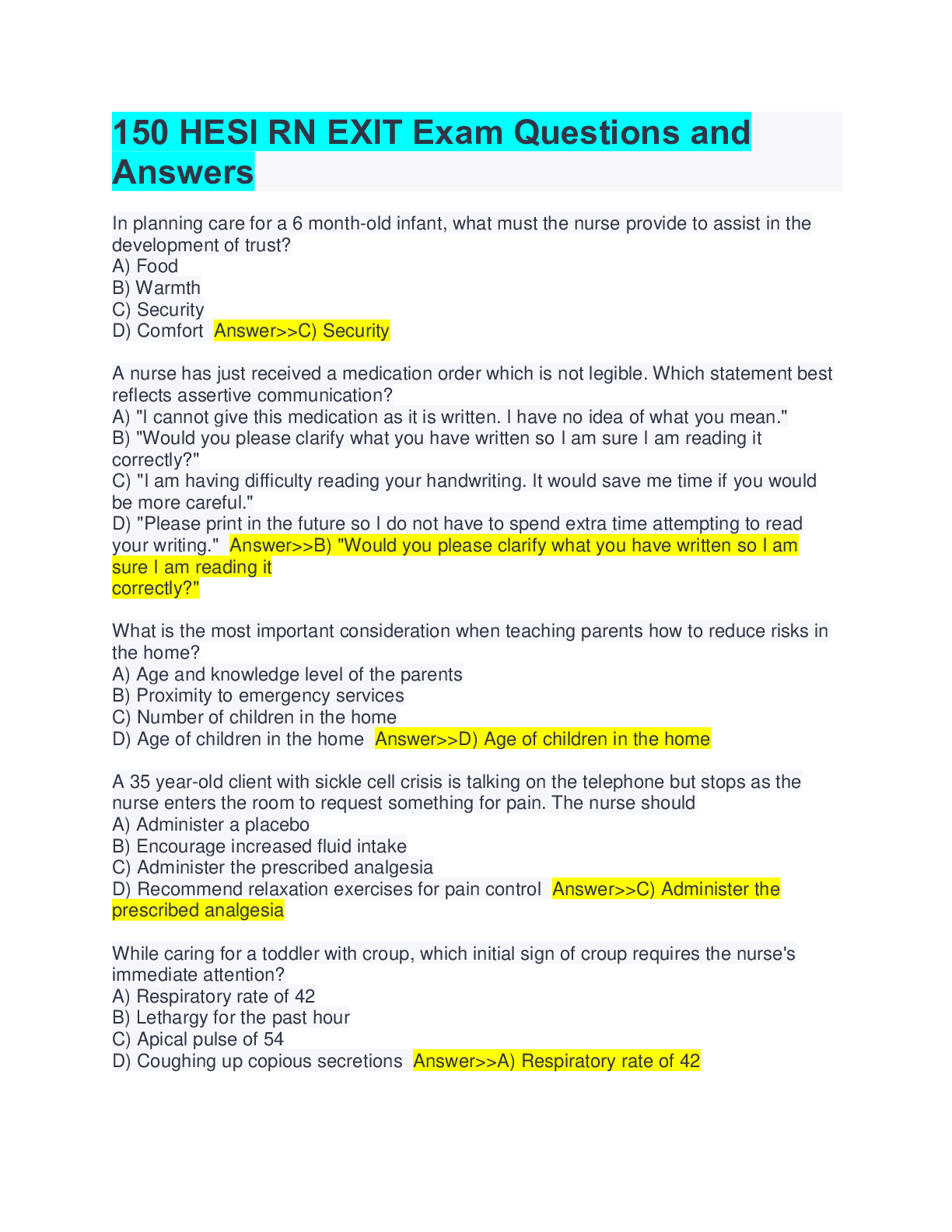


.png)










